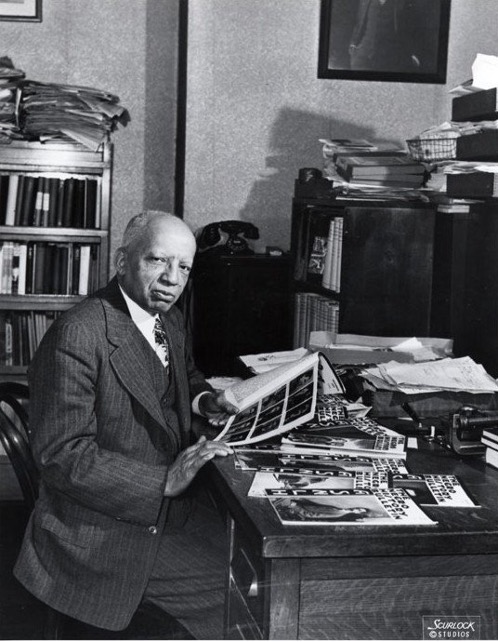
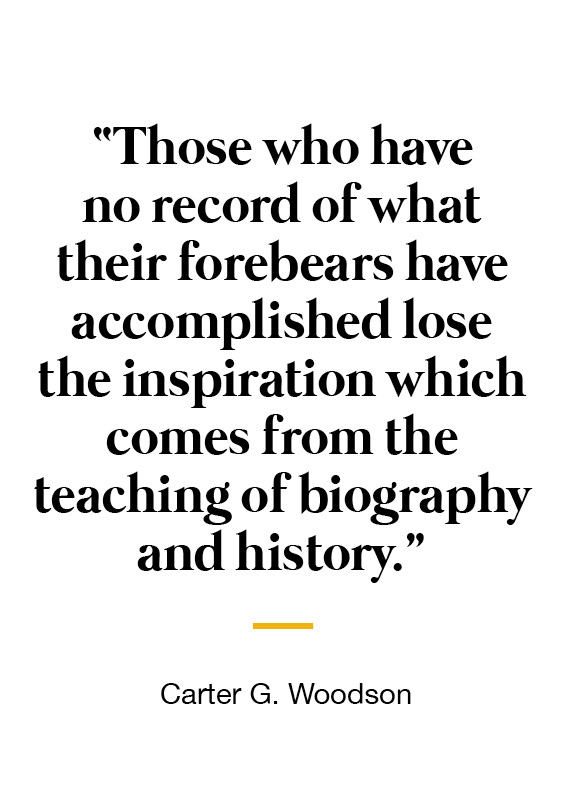
Known as the “Father of Black History,” Carter Woodson (1875-1950) was the son of former enslaved parents and understood how important gaining a proper education is when striving to secure and make the most out of one’s divine right of freedom. Although he did not begin his formal education until he was [almost] 20 years old, his dedication to study enabled him to earn a high school diploma in West Virginia, his first undergraduate degree from Berea College in Kentucky, and bachelor and master’s degrees from the University of Chicago in just a few years. In 1912, Woodson became the second African American to earn a PhD at Harvard University. He joined the faculty of Howard University, eventually serving as Dean of the College of Arts and Sciences.
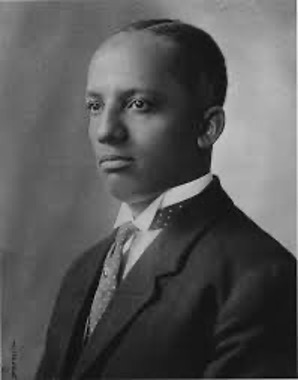 Woodson saw that the white-dominated historical profession had little interest in Black history. To preserve Black history, Woodson realized he would have to create a separate institutional structure. Woodson became known as an American historian, author, journalist, and the founder of the Association for the Study of African American Life and History. He was one of the first scholars to study the history of the African diaspora, including African-American history. He also wrote many historical works, including the 1933 book The Mis-Education of the Negro. Woodson's devotion to showcasing the contributions of Black Americans resulted in Negro History Week in the second week of February, which later expanded into Black History Month.
Woodson saw that the white-dominated historical profession had little interest in Black history. To preserve Black history, Woodson realized he would have to create a separate institutional structure. Woodson became known as an American historian, author, journalist, and the founder of the Association for the Study of African American Life and History. He was one of the first scholars to study the history of the African diaspora, including African-American history. He also wrote many historical works, including the 1933 book The Mis-Education of the Negro. Woodson's devotion to showcasing the contributions of Black Americans resulted in Negro History Week in the second week of February, which later expanded into Black History Month.
The Need for Black History
From the beginning, Woodson was overwhelmed by the response to his call. Negro History Week appeared across the country in schools and before the public. The 1920s was the decade of the New Negro, a name given to the Post-War I generation because of its rising racial pride and consciousness. Urbanization and industrialization had brought over a million African Americans from the rural South into big cities of the nation. The expanding Black middle class became participants in and consumers of Black literature and culture. Black history clubs sprang up, teachers demanded materials to instruct their pupils, and progressive whites endorsed the efforts.
Woodson and his Association for the Study of Negro Life and History (later the Association for the Study of African American Life and History) scrambled to meet the demand. They set a theme for the annual celebration, and provided study materials—pictures, lessons for teachers, plays for historical performances, and posters of important dates and people. Provisioned with a steady flow of knowledge, high schools in progressive communities formed Negro History Clubs. To serve the desire of history buffs to participate in the re-education of Black folks and the nation, the Association formed branches that stretched from coast to coast. In 1937, at the urging of Mary McLeod Bethune, Woodson established the Negro History Bulletin, which focused on the annual theme. As Black populations grew, mayors issued Negro History Week proclamations, and in cities like Syracuse progressive whites joined Negro History Week with National Brotherhood Week.
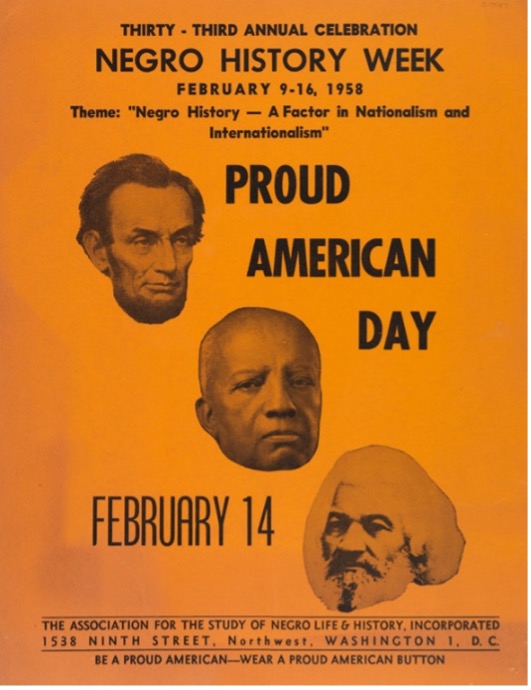
Source: virginiahistory.org
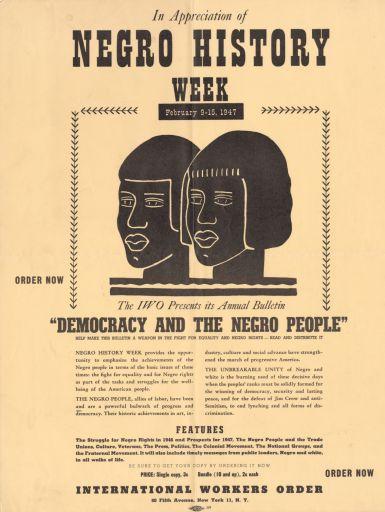
Source: goldenvalley.kernhigh.org
Black History Month
Negro History Week was first launched in 1926. In 1975, President Ford issued a Message on the Observance of Black History Week External urging all Americans to "recognize the important contribution made to our nation's life and culture by black citizens." In 1976, Association for the Study of African American Life and History expanded this commemoration of Black history in the United States from a week-long observance to Black History Month, which also has been known as African American History Month. In the same year, President Ford issued a Message on the Observance of Black History Month External. In subsequent years, presidents continued to issue messages External honoring Black History Month. Then, in 1986, Congress passed Public Law 99-244, which designated February 1986 as "National Black (Afro-American) History Month.

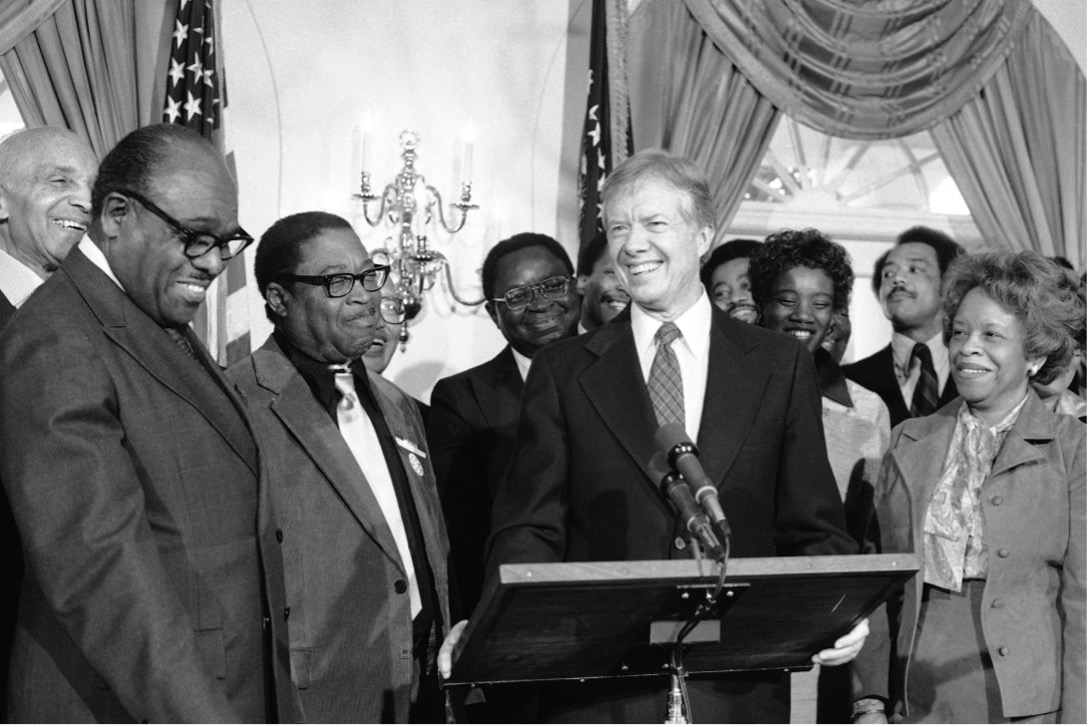
Jimmy Carter draws smiles from black leaders in the Cabinet Room of the White House in Washington, Jan. 15, 1980, as he declares February "Black History Month". (AP Photo/Harvey Georges) Source: mississippifreepress.org
Woodson’s Legacy
Woodson died at the age of 74 in 1950, long before U.S. Presidents recognized Black History Month. However, his legacy lives on every February when schools across the nation study Black American history, empowering Black Americans and educating others on the achievements of Black Americans.
Yet, it’s important to remember that Woodson never viewed Black history as a one-week affair. He pressed for schools to use Negro History Week to demonstrate what students learned all year. In the same vein, he established a Black studies extension program to reach adults throughout the year. It was in this sense that Black Americans would learn of their past on a daily basis that he looked forward to the time when an annual celebration would no longer be necessary. Woodson believed that Black history was too important to America and the world to be crammed into a limited time frame.
Thus, let us think of Black History Month the way our nation honors its greatest moments and greatest people. Let us appreciate Black History Month in a similar way—as when our government sets aside a month or day, thereby giving it a special meaning for all Americans. No one should think that Black History is confined to the month of February, when evidence to the contrary appears everywhere and in every month. Thanks to the pioneering work of Woodson and ASALH, information on the contributions of persons of African descent to our nation and world is currently taught in universities and in many K-12 schools. Black History is featured in television documentaries and in local and national museums. It is conveyed through literature, the visual arts, and music. The great lives and material culture of Black History can be seen in national park sites and in the preservation of historic homes, buildings, and even cemeteries. Black History Month is not a token. It is a special tribute—a time of acknowledgement, of reflection, and inspiration—that comes to life in real and ongoing activities throughout the year, just as the work of ASALH has for 106 years steadily asserted both racial pride and the centrality of race and the black experience to the American narrative and heritage.
- Evelyn Brooks Higginbotham 2021 ASALH National President
Learn more about Carter G. Woodson:
- https://news.harvard.edu/gazette/story/2022/02/celebrating-black-history-months-founder/
- https://www.nps.gov/cawo/learn/carter-g-woodson-biography.htm
- https://asalh.org/about-us/about-black-history-month/
Sources
- https://news.harvard.edu/gazette/story/2022/02/celebrating-black-history-months-founder/
- https://www.nps.gov/cawo/learn/carter-g-woodson-biography.htm
- https://asalh.org/about-us/about-black-history-month/
- https://naacp.org/find-resources/history-explained/civil-rights-leaders/carter-g-woodson

Freedom Heroes
Discover more courageous individuals that have taken a stand for freedom and justice.